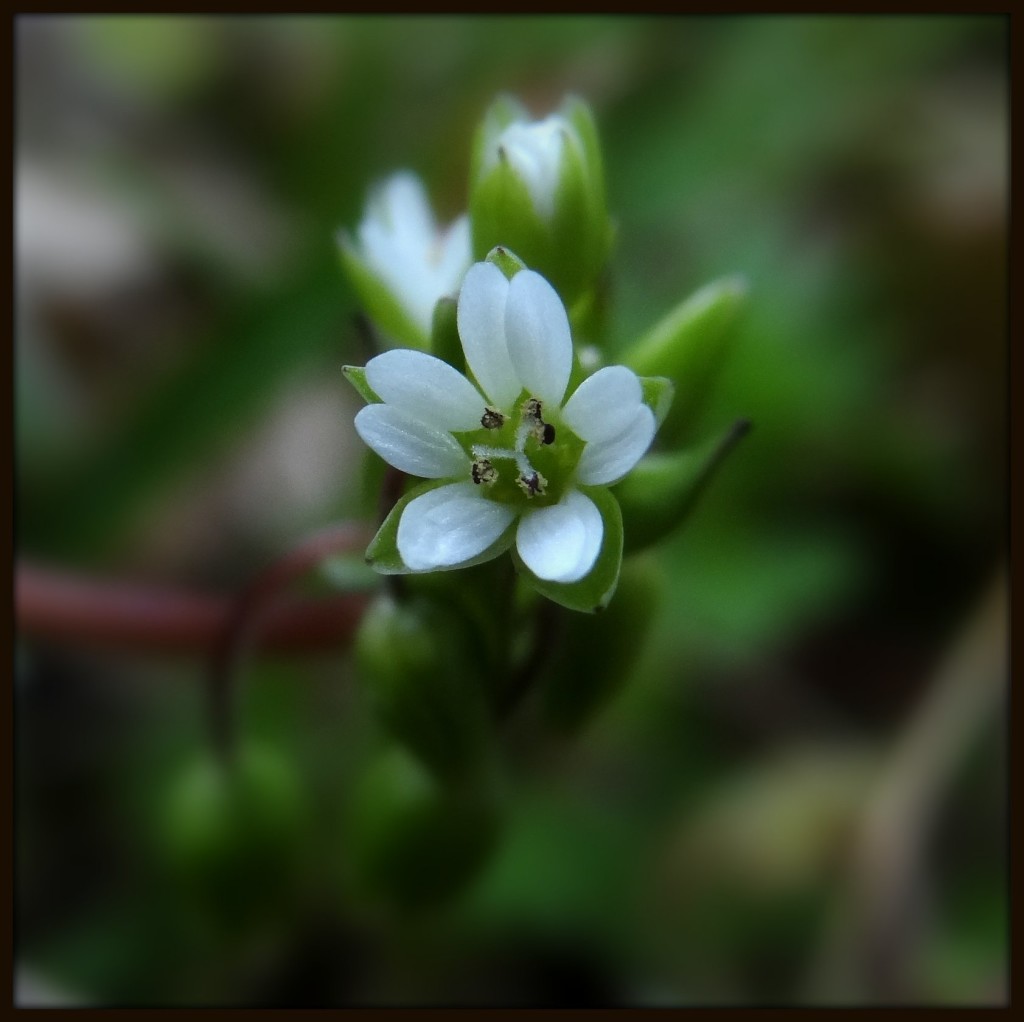Along the grassy verges of Piney Woods Church Road, common chickweed (Stellaria media) is coming into bloom. Alas, it has so many strikes against it already: the flowers are minute (maybe half a centimeter across), the plant itself is low-growing and inconspicuous, and it is a common weed inhabiting lawns, road edges, and waste places across all of North America. Do a Google search for chickweed, and the top item on the list is liable to be an ad for weed killer. Common chickweed isn’t even native to these shores; it crossed the Atlantic from Europe. In its travels, it managed to pick up quite a few common names, including adder’s mouth, passerina, satin flower, starweed, starwort, stitchwort, tongue-grass, and winterweed. It does have many uses; it is an edible field green, and can be used to treat coughs when taken as a tea, and relieve itches when applied as a salve. And it makes a lovely portrait, for those who have the patience to sit beside it on the rain-soaked ground and keep taking close-ups, hoping for one that will be more or less in focus.

Chickweed has never looked so lovely!
Thanks, Judy!
Clifford
One mans trash is another mans treasure. Our Chickens love it and you can see the eating the fresh greens every spring. Judy even snuck some into my salad last week. Not to bad.
Mike,
Thank you for sharing your chickweed experiences. Now I understand why it is called “chickweed”. I have been tempted to try some myself, but most of what I find near my house is too close to the road for me to trust it. I love foraging for wild greens — it is amazing how much is edible (and highly nutritious) out there!
Clifford